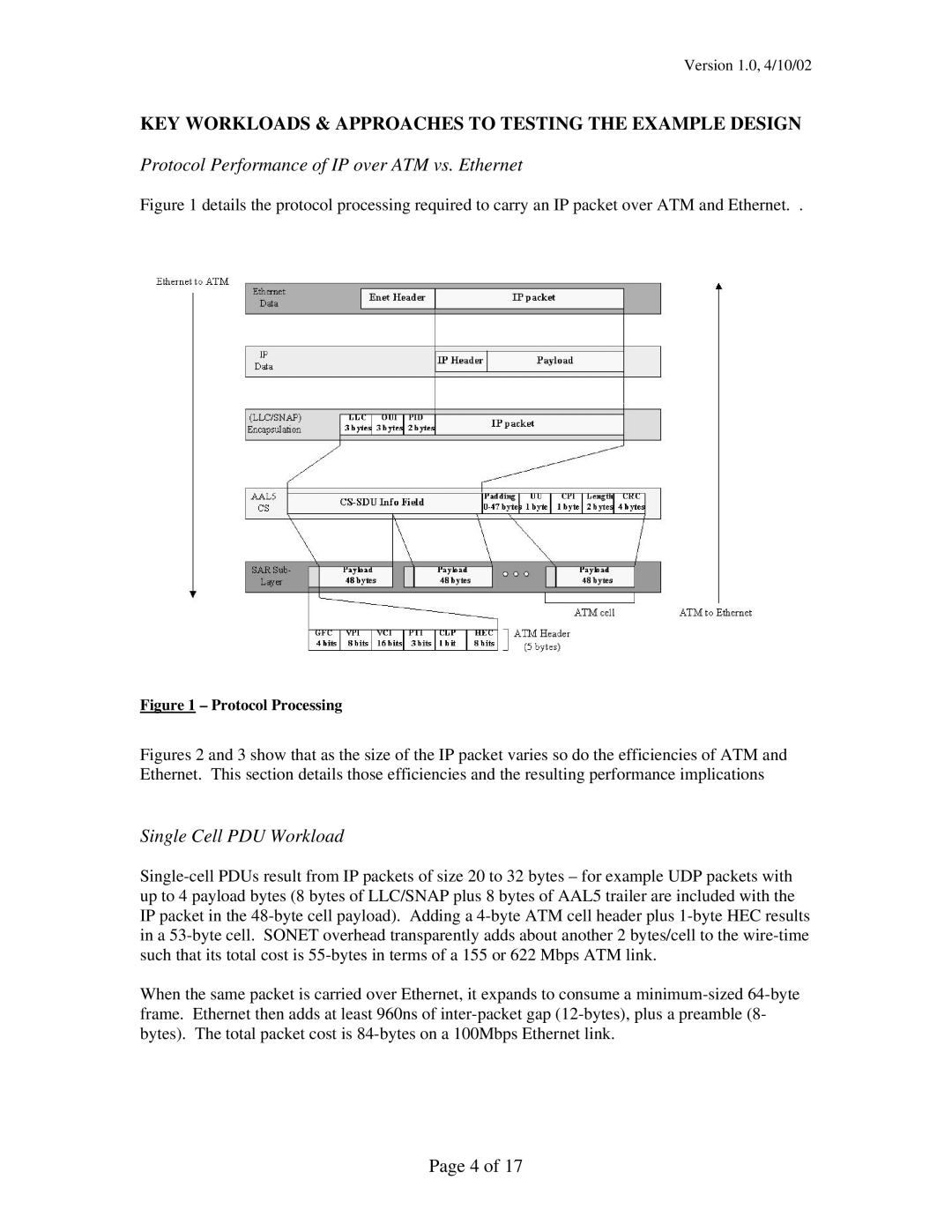
Version 1.0, 4/10/02
KEY WORKLOADS & APPROACHES TO TESTING THE EXAMPLE DESIGN
Protocol Performance of IP over ATM vs. Ethernet
Figure 1 details the protocol processing required to carry an IP packet over ATM and Ethernet. .
Figure 1 – Protocol Processing
Figures 2 and 3 show that as the size of the IP packet varies so do the efficiencies of ATM and Ethernet. This section details those efficiencies and the resulting performance implications
Single Cell PDU Workload
Single-cell PDUs result from IP packets of size 20 to 32 bytes – for example UDP packets with up to 4 payload bytes (8 bytes of LLC/SNAP plus 8 bytes of AAL5 trailer are included with the IP packet in the 48-byte cell payload). Adding a 4-byte ATM cell header plus 1-byte HEC results in a 53-byte cell. SONET overhead transparently adds about another 2 bytes/cell to the wire-time such that its total cost is 55-bytes in terms of a 155 or 622 Mbps ATM link.
When the same packet is carried over Ethernet, it expands to consume a minimum-sized 64-byte frame. Ethernet then adds at least 960ns of inter-packet gap (12-bytes), plus a preamble (8- bytes). The total packet cost is 84-bytes on a 100Mbps Ethernet link.

